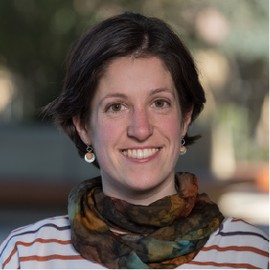[***NOTE: Video is not available at this time.***] Fracture mechanics insights into fault coupling and earthquake nucleation
Video not found
Please check back later. Videos are usually posted within 24 hours.
Camilla Cattania
Massachusetts Institute of Technology

- Date & Time
- Location
- Online-only seminar via Microsoft Teams
- Host
- Max Schneider
- Summary
The occurrence of precursory activity prior to large earthquakes, and its physical origin, remain outstanding questions in earthquake physics. A discrepancy exists between laboratory experiments, characterized by vigorous precursory activity enabling prediction of frictional failure; and natural fault systems, where seismic and aseismic precursors are rarely observed. Here I will present recent progress in tackling these questions using numerical simulations and theoretical models based on fracture mechanics, focusing on two complementary aspects: 1) the seismic behavior of geometrically complex faults; 2) fault coupling and earthquake nucleation on faults subject to gradients in stressing rate (such as those due to adjacent creep).
In the first part of the talk, I will explore the hypothesis that spatial heterogeneity can give rise to interseismic fault unlocking, aseismic transients, and an increase in seismicity rate not captured by classical nucleation models. Spatially variable strength or stressing rate cause neighboring fault patches to reach failure at different times, producing a gradual expansion of creeping patches. The evolution of fault coupling can be explained by a fracture mechanics criterion, which successfully predicts the evolution of acoustic emission measured in laboratory experiments on rough vs. smooth faults. The model predicts a transition to dynamic rupture once creep fronts reach a critical dimension, consistent with earlier studies; additionally, under certain loading conditions, dynamic rupture is preceded by a sequence of aseismic transients. Numerical simulations confirm this behavior for specific realizations of heterogeneity, including faults loaded by deep creep and fault strength modulated by subducted seamounts. Taken together, these studies indicate that heterogeneity in fault strength and loading rate can produce a broad range of fault slip behaviors, including stable creep, slow transients, and earthquakes. Different slip modes can overlap spatially, but they evolve in predictable and diagnostic ways throughout the seismic cycle, consistent with laboratory observations. I will conclude by discussing possible implications for natural faults and the conditions under which these processes may or may not be observable.
 Jump to Navigation
Jump to Navigation